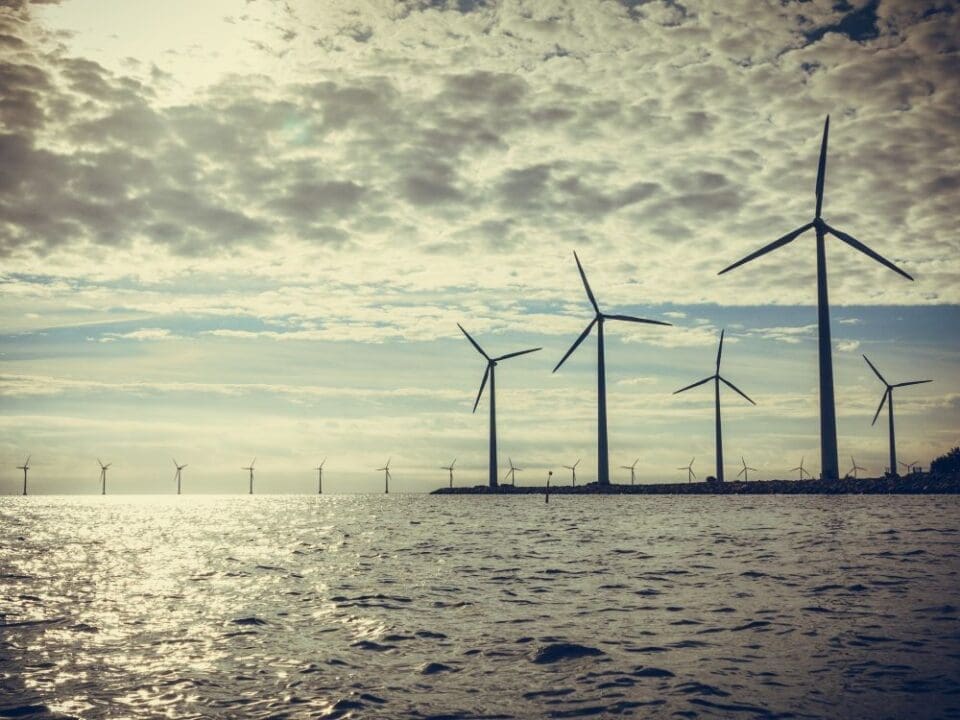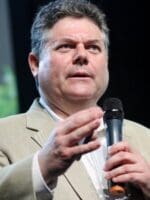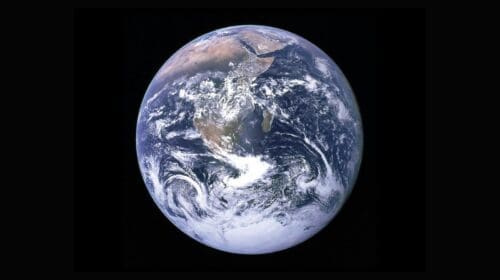The offshore wind energy sector in the North Sea showed significant growth and investment in 2024. In fact, several recent developments are already reshaping the industry’s future. This article aims to provide a short overview of the major 2024 announcements which have the potential to advance new North Sea investments in offshore wind energy.
Building on the momentum from previous years, 2024 showed investors and lenders that there is continued commitment to the ambitious targets set by two critical agreements: The Dublin Declaration and the Ostend Declarations. The Dublin Declaration, signed in 2022 by members of the North Seas Energy Cooperation (NSEC), aimed for at least 260 GW of offshore wind capacity by 2050, with interim targets of 76 GW by 2030 and 193 GW by 2040. The Ostend Declaration, signed in 2023, further raised these targets to 120 GW by 2030 and at least 300 GW by 2050 for an expanded coalition which now totals nine countries.
In 2024, these declarations helped drive new investment and policy decisions. Countries reaffirmed their commitment to these goals and announced new measures to accelerate offshore wind development in the North Sea.
Several offshore wind projects were anticipated to receive approval of their Construction and Operations Plans (COPs) in 2024, paving the way for construction to begin shortly thereafter.
Two big projects are standouts that help showcase the plans for offshore wind energy in the North Sea:
The North Sea Wind Power Hub (NSWPH) is an ambitious, large-scale plan to develop offshore wind energy in the North Sea. According to Jeroen Brouwers, spokesperson for TenneT, the Dutch-German transmission system operator that first proposed the North Sea Wind Power Hub, “Don’t be mistaken; this is really a very large, very ambitious project – there’s nothing like it anywhere in the world. We’re taking offshore wind to the next level.”
The NSWPH plan proposes building one or more artificial islands in the North Sea, specifically at the northeast end of the Dogger Bank, a relatively shallow area. The hub aims to support 70,000-100,000 MW of offshore wind capacity, with thousands of wind turbines placed around the artificial islands. It’s a joint effort involving multiple European countries, particularly the Netherlands, Germany and Denmark. Other countries like Norway, the UK and Belgium are also expected to join. The hub will serve as an interconnector, linking the electricity grids of multiple North Sea countries and enabling international electricity trade. On the artificial islands, power converters will change the alternating current from wind turbines to direct current for efficient long-distance transmission to the mainland.
The project is part of a long-term plan with completion expected around 2050. The consortium envisions the first island could be realized by 2035. By centralizing operations and maintenance for multiple wind farms, the hub aims to significantly reduce costs and make offshore wind more economically viable. The NSWPH also considers converting surplus wind power into other forms of energy or storing it, potentially including offshore hydrogen production.
The LionLink project, announced in 2023, is a collaboration between Dutch transmission system operator TenneT and the UK-based National Grid Corp. It gained some real momentum in 2024. This is a first-of-its-kind cross-border electricity link. As a vital infrastructure connection to offshore wind farms, it made progress in 2024 with further investments and more detailed planning. The project’s overall aim is to connect a Dutch 2 GW offshore wind farm to both countries via subsea interconnectors. If successful, it could have the effect of enhancing energy security and independence in Europe.
Lease auctions are the vital first legal step for the North Sea’s future offshore wind project developments. The U.S. federal government’s Bureau of Ocean Energy Management (BOEM) lease auctions have served as a model for similar processes in Europe. In October 2024, BOEM completed its sixth offshore wind lease by offering areas in the Gulf of Maine. These auctions demonstrate the global trend towards expanding offshore wind capacity and provide insights for North Sea countries looking to optimize their leasing processes.
The increased investments flowing into floating offshore wind technology are becoming crucial for projects located in deeper waters of the North Sea. Four key areas of development have seen progress:
- Optimizing mooring and dynamic cable design requirements for floating wind
- Ground investigations for floating wind turbines
- Advancements in concrete technology for floating offshore wind structures
- Development of floating offshore wind substations.
These technological advancements are backed by significant investments from both public and private sectors, aiming to reduce costs and increase the feasibility of floating wind farms in challenging North Sea conditions.
Recognizing that smarter port infrastructure is a critical piece of the puzzle, supporting offshore wind development, several North Sea countries announce major investments in 2024. The Netherlands unveiled plans to increase offshore wind port infrastructure capacity to support the growth from 1.5 GW to 11.5 GW by 2030. The United Kingdom also stepped up, with significant investments aiming to upgrade its existing ports while developing new facilities specifically designed for offshore wind component manufacturing and assembly. Germany announced expansions to key North Sea ports in order to accommodate larger turbines and increased project volumes.
The offshore wind industry’s growth necessitates specialized vessels. In 2024, these announcements have been made regarding the construction of new vessels:
- Multiple European shipyards announced contracts for new WTIVs designed to handle the next generation of larger offshore wind turbines.
- Investments were made into new and upgraded cable laying vessels to support the increasing number of offshore wind projects.
- Contracts were signed for SOVs to support the growing fleet of operational wind farms in the North Sea.
A surge in announcements related to offshore wind component manufacturing in North Sea countries was seen in 2024. Major turbine manufacturers announced expansions of existing facilities and the construction of new plants to meet the growing demand. New blade manufacturing facilities were announced, with a focus on producing longer blades for next-generation turbines. Investments were made in facilities for producing both fixed-bottom and floating foundations, including innovative designs for deeper waters.
North Sea countries announced a variety of new financial support mechanisms in 2024 to accelerate offshore wind development, including new or expanded subsidy schemes for offshore wind projects, particularly focusing on floating wind and innovative technologies. New tax breaks and incentives are now available for companies which are investing in offshore wind manufacturing and infrastructure. Additionally, governments have increased public funding for offshore wind R&D, with a focus on cost reduction and technological advancements.
Most importantly during 2024, significant private sector investment announcements focused on tapping into the North Sea’s offshore wind potential. Major European utilities announced plans to increase their offshore wind portfolios substantially. Investments are flowing from traditional energy companies diversifying into offshore wind. Pension funds and other large investors announced significant capital allocations to offshore wind projects.
The year 2024 marked a pivotal moment for offshore wind energy in the North Sea, with announcements spanning technological advancements, infrastructure development, supply chain expansion, and financial investments. These developments collectively demonstrate the region’s commitment to achieving ambitious renewable energy targets and solidifying its position as a global leader in offshore wind. As these investments come to fruition, they will contribute significantly to Europe’s clean energy transition, and could also create substantial new economic development opportunities which drive innovation and job creation.
Headline image: Wind turbine generator farm for renewable, sustainable and alternative energy production along the Baltic Sea coast near Denmark. Courtesy of 123rf.
Gordon Feller is a Global Fellow at the Smithsonian Institution. His 450+ of his magazine articles have been published over 40+ years by World Bank, UN, World Economic Forum, Financial Times of London, The Economist, TIME, Fortune, ThomsonReuters, S&P. He served for years as Director at Cisco’s global HQ, and before that at HQs of IBM, Bechtel, Lockheed. Born in NYC; cum laude degrees from Columbia University, which awarded him the Gov. Lehman Fellowship, the Wallach Fellowship, the Dean’s Fellowship. Later, Feller won the U.S. Sen. Mark Hatfield Fellowship and The Japan Foundation’s Prime Minister Abe Fellowship.
Oil and gas operations are commonly found in remote locations far from company headquarters. Now, it's possible to monitor pump operations, collate and analyze seismic data, and track employees around the world from almost anywhere. Whether employees are in the office or in the field, the internet and related applications enable a greater multidirectional flow of information – and control – than ever before.







